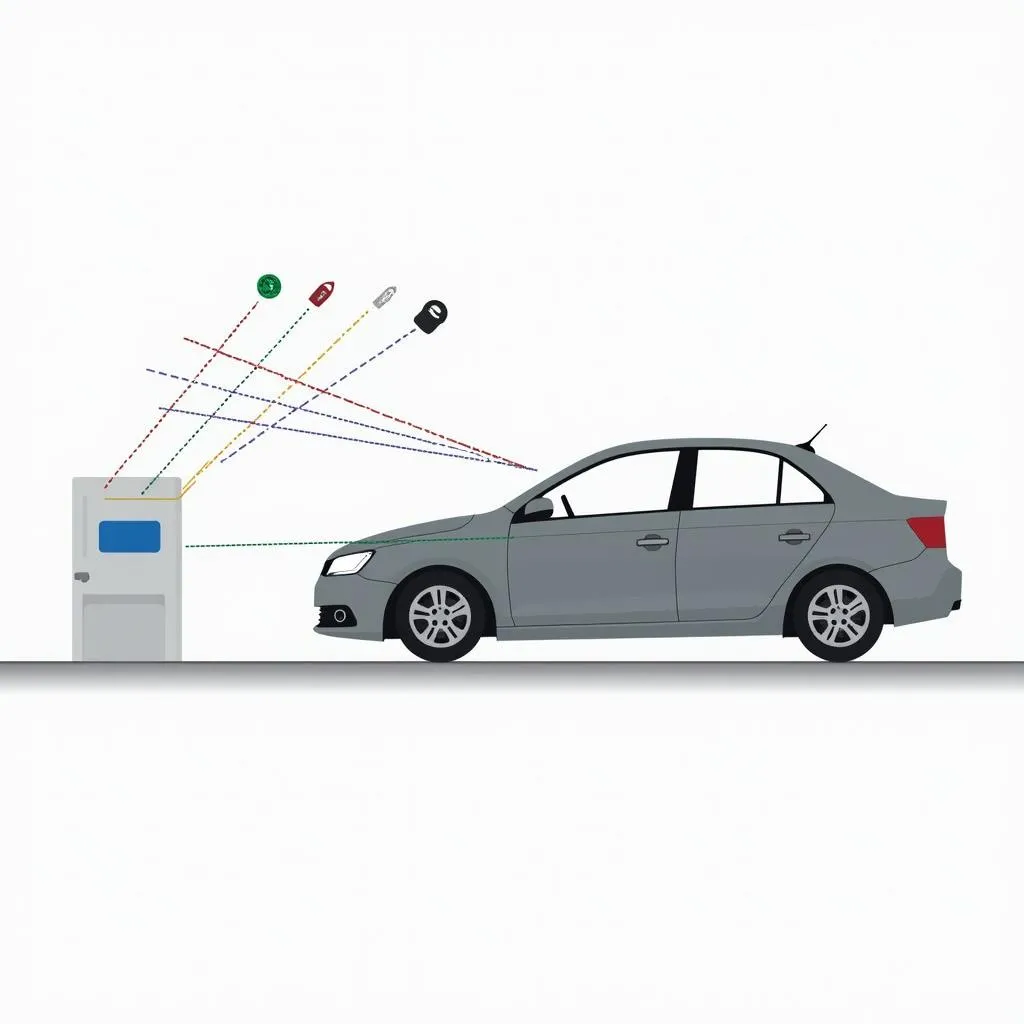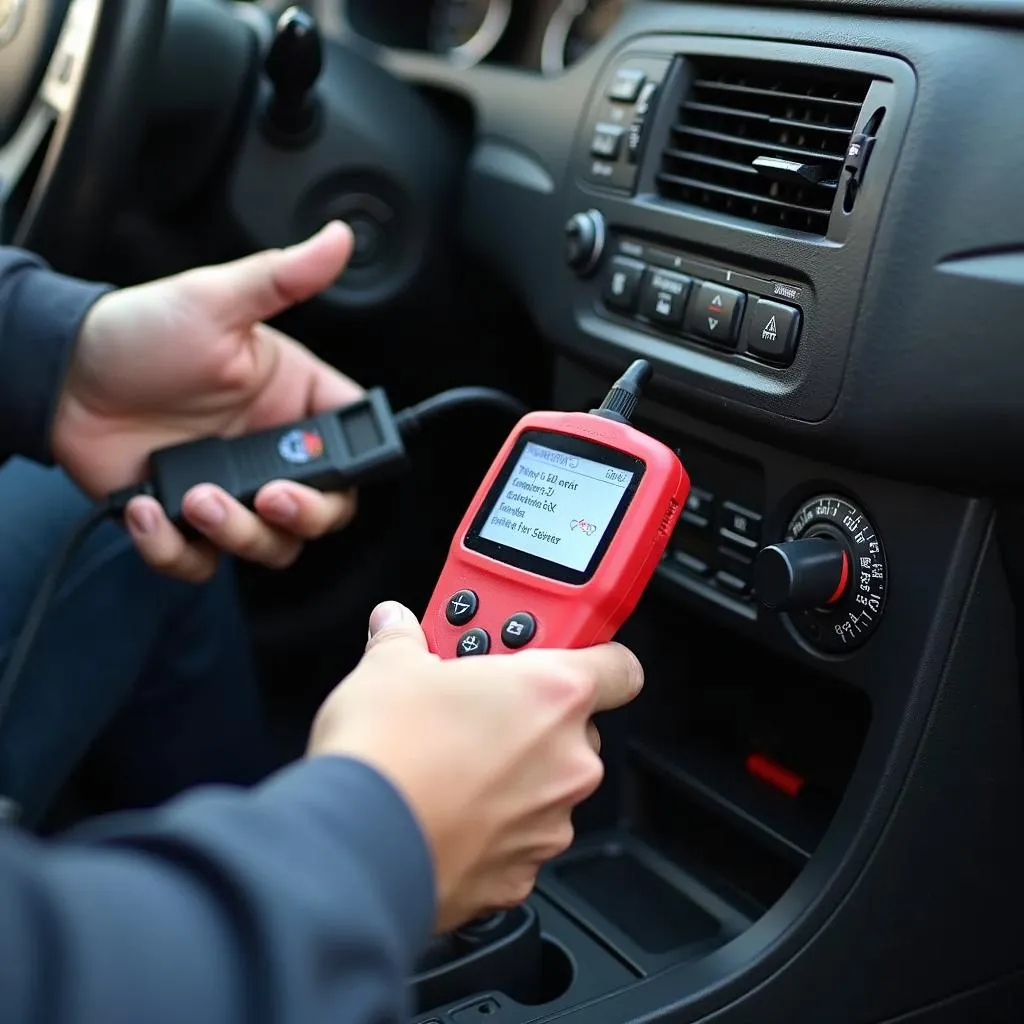In today’s world, car security is more sophisticated than ever. Gone are the days of simple lock-and-key systems. Modern vehicles employ intricate electronic anti-theft systems to deter even the most determined thieves. But how do these systems actually work?
This article delves into the fascinating world of automotive anti-theft technology, exploring the common components, how they function, and what to do if you encounter issues.
Understanding the Basics: Key Components of Car Anti-theft Systems
Most modern vehicles utilize a combination of electronic and mechanical components to create a robust security system. These components work in sync to protect your car from unauthorized access and theft.
1. Immobilizer System
At the heart of many anti-theft systems lies the immobilizer. This system prevents the engine from starting without the presence of the correct key. Here’s how it works:
- Transponder Key: Your car key isn’t just a piece of metal anymore. It houses a tiny computer chip called a transponder.
- Immobilizer Receiver: Inside your car, usually around the ignition switch, is a receiver. When you insert your key, this receiver sends out a radio signal.
- Matching Signals: The transponder in your key picks up this signal and sends back a unique code. If the codes match, the immobilizer system disengages, allowing the engine to start.
2. Alarm System
The car alarm system acts as the first line of defense, deterring potential thieves with audible and visual warnings. It typically involves:
- Sensors: These sensors are strategically placed throughout your vehicle to detect unauthorized entry. They might detect impacts, changes in pressure (like when a window is broken), or movement within the car.
- Siren: Once a sensor is triggered, the alarm system activates a loud siren, scaring off intruders and alerting those nearby.
- Lights: The alarm might also flash the car’s headlights and interior lights, drawing further attention to the situation.
 Car alarm system with sensors
Car alarm system with sensors
3. Remote Keyless Entry
Adding another layer of convenience and security, remote keyless entry systems use radio frequency identification (RFID) to lock and unlock your car remotely. They usually include features like:
- Locking/Unlocking: Pressing the button on your key fob sends a coded signal to your car, locking or unlocking the doors.
- Panic Button: In an emergency, pressing the panic button triggers the alarm, even if the car is locked.
Common Anti-Theft System Issues and Troubleshooting Tips
Even the most advanced systems can experience problems. Here are some common issues you might encounter:
1. Key Fob Malfunctions
- Problem: The key fob might stop working due to a dead battery, broken buttons, or a malfunctioning transponder chip.
- Solution: Try replacing the key fob battery first. If that doesn’t work, you might need to have the key fob reprogrammed or replaced by a qualified automotive locksmith or dealership.
2. Immobilizer System Errors
- Problem: A faulty immobilizer system might prevent the car from starting, even with the correct key. This can be due to a malfunctioning receiver, a communication error between the key and receiver, or issues with the engine control unit (ECU).
- Solution: Diagnosing and repairing immobilizer issues typically requires specialized diagnostic equipment. It’s recommended to seek assistance from a qualified automotive electrician or dealership technician.
 Car diagnostic tool connected to a car
Car diagnostic tool connected to a car
3. Alarm System False Alarms
- Problem: A hypersensitive alarm system can trigger false alarms, causing inconvenience and frustration. This might be due to a faulty sensor, electrical interference, or improper installation.
- Solution: Check for any loose or damaged sensors and make sure they are clean and free of debris. If the problem persists, consult a qualified automotive electrician to inspect the system.
Frequently Asked Questions about Anti-theft Systems:
Q: Can I install an aftermarket anti-theft system on my car?
A: Yes, many aftermarket anti-theft systems are available. However, choosing a reputable brand and ensuring proper installation by a qualified professional is crucial for optimal performance and compatibility with your vehicle’s electrical system.
Q: I lost my only car key. What can I do?
A: Contact your dealership or a qualified automotive locksmith. They can usually cut and program a new key for your specific car model, even without the original. Keep in mind that this process might require proof of ownership.
Q: My car battery died. Will it affect the anti-theft system?
A: Disconnecting or completely draining your car battery can sometimes affect the anti-theft system. In some cases, the system might need to be reset or re-synchronized with the key after a battery replacement.
Cardiagtech: Your Partner in Automotive Diagnostics and Repair
Experiencing issues with your car’s anti-theft system? Cardiagtech offers advanced diagnostic and programming solutions to help get your vehicle back on track. Our team of experienced technicians understands the intricacies of modern automotive electronics and can provide reliable troubleshooting and repair services.
Conclusion
Understanding how your car’s anti-theft system works empowers you to better protect your vehicle. By familiarizing yourself with the different components and common issues, you can make informed decisions about maintenance and repairs.
Remember, if you encounter any problems with your car’s anti-theft system, don’t hesitate to contact a qualified professional. For advanced diagnostics and programming solutions, explore the services offered by CARDIAGTECH. Our expertise can help you ensure your car’s security system remains robust and reliable.
